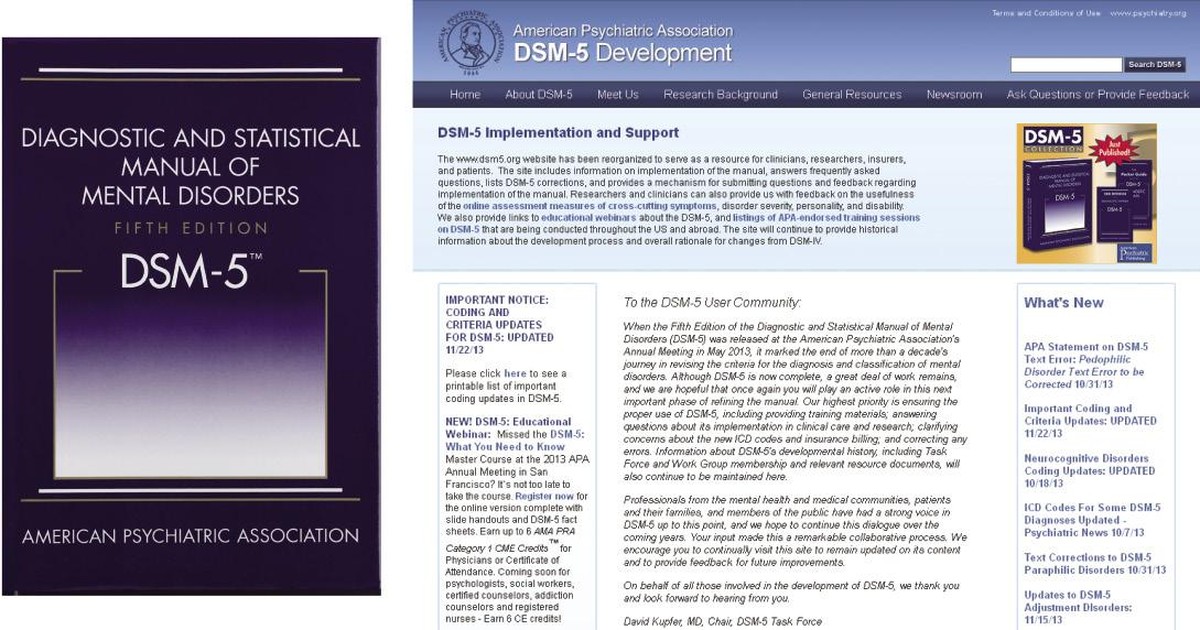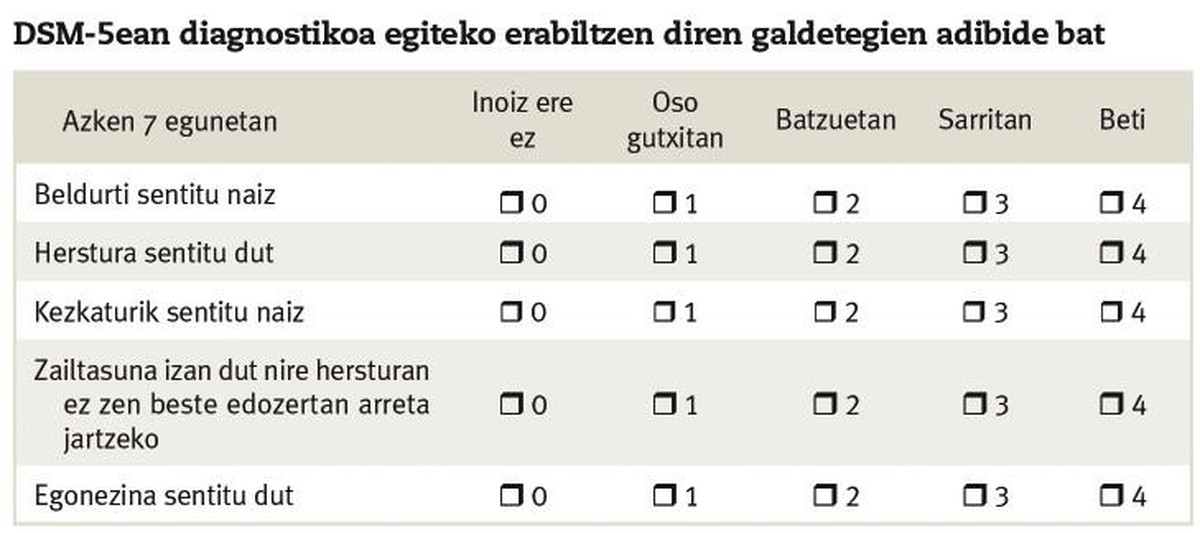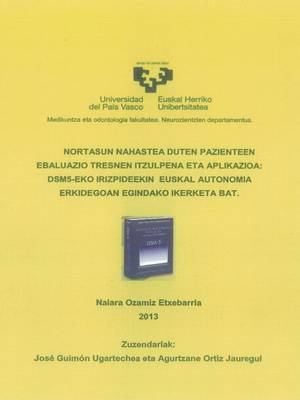Validating personality disorders tools from the DSM-5 guide
Current systems of classification of mental diseases
Currently the GSN-10 and DSM-5 are the main systems of classification of mental diseases.
The International Classification of Diseases GNS (ICD, International Statistical Classification of Diseases and Related Health Problems) was developed by the International Institute of Statistics in 1893. The latest version, GNS-10, was published in 1992 by the World Health Organization and is an international classification of diseases.
The classification of mental diseases performed by APA is called DSM (Diagnostic and Statistical Manual of Mental Disorders). Used by clinicians, researchers, medical and psychiatric regulation systems, health insurance companies, pharmaceutical companies and politicians from around the world. It is mainly used in the United States.
As mentioned above, since the publication of the first in 1952, five revisions have been made. In these reviews, mental disorders have been added or eliminated depending on needs. The fifth edition was published in May 2013, in San Francisco, at the annual APA congress. In the third section of DSM-5 (area of uninvestigated diseases) a new proposal for the diagnosis of personality disorders is made.

New reformulation New reformulation
Personality disorders are internal experiences and patterns of behavior that move away from cultural expectations. That is, the patterns of cognition, affectivity, relationship, impulse are inadequate for those who suffer them. These patterns are rigid and generate significant clinical restlessness and social, labor, deterioration.
So far, personality disorders have been categorically classified.
This way of classifying personality disorders as individual and limited pathological entities. That is, each confusion is a category with specific alterations. Therefore, the function of categorical classification is to describe whether or not it has a personality disorder. However, this categorical classification has always been highly criticized, among other things, that patients can belong to several categories and that there is a great heterogeneity among patients that can be included in a category.
Therefore, a dimensional model is proposed in this third section of DSM-5. The arguments in favor of this dimensional model are, among others, to provide more flexible, specific and understandable information, to reduce the overlap of the different diagnoses and to facilitate to the therapist specific areas of intervention.
For a better understanding of the arguments in favor of this model, examples of two patients will be presented and a comparison will be made between both forms of diagnosis. (Although these examples are real, the names are not true to ensure the confidentiality of patients).
1. Maria, a 22-year-old patient, suffers from affective instability and lives episodes of great anxiety. It often has a very irritating attitude, since it makes an interpretation that will hurt the behavior of others. It often has the feeling of being rejected by others, since it distrusts their fidelity and, therefore, behaves with behaviors of self-control. She has no friends because she does not manage to maintain a stable relationship for a long time and is quite distrustful. He has never managed to finish some study, nor dedicate more than three weeks to a job. It involves aggressive behaviors in terms of expenses, sex, and substance abuse. It also shows instability in the way of eating: sometimes it makes big cavities and sometimes it doesn't eat anything. He has been admitted five times in the psychiatric hospital for suicide trials.
2. Aitor, another 25-year-old patient, also suffers from affective instability and often behaves as an automatic utility. It has aggressive behaviors in terms of expenses and difficulty to control an irritating attitude.
Although he has a feeling of suffering and emptiness, he keeps his job, has a partner and friends and has never been admitted to the psychiatric hospital.
Diagnosing with DSM-IV:
1. In the case of Mary, a diagnosis would be made for the confusion of border and paranoid identity.
2. In the case of Aitor, limiting personality disorder.
However, it is clear that the first case is more serious than the second case. Using the proposed diagnostic model for DSM-5, the severity of each patient and the characteristics of each patient could be specified. That is to say, not only would they have a confusion of border identity, but also would define the degree of gravity and the characteristics of each of them, that is, we would have more information. In addition, following this new model, in the case of Mary it could be said that it has characteristics of mistrust, so it would not have two diagnoses, there would be no diagnostic overlap.
Diagnosing with DSM-5:
1. In the diagnosis of Mary it would be reflected:
• Degree of personality functioning: extreme damage.
• “Limiting personality disorder: it adapts very well to its definition, being the patient an example of this model.
• Signs of identity: aggression, manipulation, irritability, negligence, aggression, anxiety, insecurity in the separation of other people, pessimism, emotional instability, self-harm, depression and mistrust.
2. In the case of Aitor it would be reflected:
• Degree of performance of the personality: little damage.
• Limiting personality disorder: it adapts very little to its definition; the patient is characterized by this model.
• Signs of identity: aggression, emotional instability, self-harm, irritability and aggression.
Research carried out in the Autonomous Community of the Basque Country
For an effective diagnosis of a disease it is important to know the cultural context of them. Therefore, it is necessary to evaluate the diagnostic scales that are generated in the different fields, countries and cultures. To express a feeling, different concepts are used in each culture, so it is important to know how these concepts are used in each culture and language. For example, in Basque, what we describe with the word restlessness is manifested differently in other countries: nerve attack in Latin America, Khyâl cap Cambodia, Kufungisisa Zimbabwe, Maladi moun Haitin and Tajin kyfusho in Japan.
Therefore, in the translations made in this study, concepts that are comprehensible for the Basques have been used.
For this reason, the diagnostic proposals for DSM-5 have been presented on the APA website since 2010 for field research in countries. Since they are on the web and all professionals in the world have access to new criteria, the DSM-5 proposal is a living document.
With these tools provided by APA, an investigation has been conducted in the Autonomous Community of the Basque Country. However, the Autonomous Community of the Basque Country has the peculiarity of being a bilingual country, so these scales have also been translated into Basque. On the other hand, it has been demonstrated the usefulness and intelligibility of these translated tools, as well as the validity of the new tools and contents of the scales of DSM-5. Finally, DSM-IV diagnoses have been compared with those of DSM-5.
The data collection was carried out in different institutions of the Autonomous Community of the Basque Country. Psychiatric Unit of the Hospital San Juan de Dios de Santurtzi, Day Centers of AMSA in Indautxu and Elcano, Psychiatric Hospital of Basurto, Mental Health Center of Gernika, Mental Health Center of Bermeo, Health Center of Drug Dependencies Bitarte de Donostia.
As has been said, these APA tools were in English and were translated into Basque.
For the application of the tools, the test-retest methodology was used, performing the same test twice. In this case, a first interview was conducted and a month later the interview was repeated to measure the reliability of the criteria.
Thus, it has been shown that these new DSM-5 criteria are valid in patients with a Basque mother tongue.

Conclusions of the study
After the analysis of the results of the study, a series of conclusions were drawn. First, it is confirmed that the DSM-5 tools translated into Basque have the same meaning as the originals. On the other hand, these new tools have been perfectly understandable and easy to use, both for trained evaluators and for patients. In addition, as for the validity of the contents, it is found that they are useful tools. And it is also concluded that the tools proposed in the third section of DSM-5 are much more precise than those of DSM-IV.








